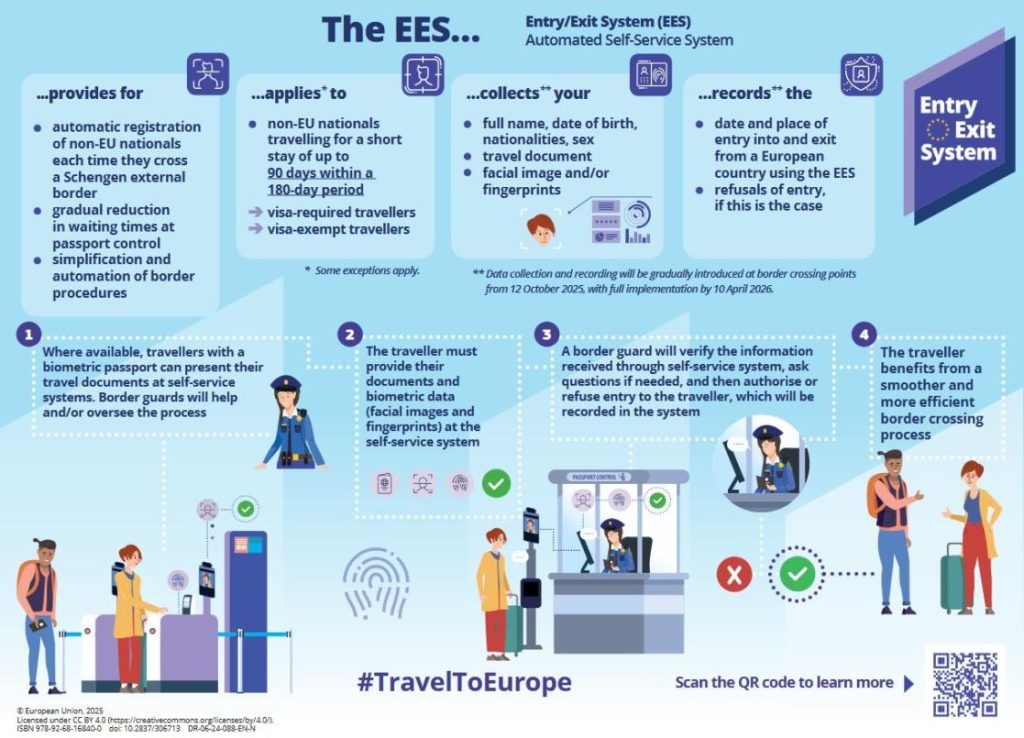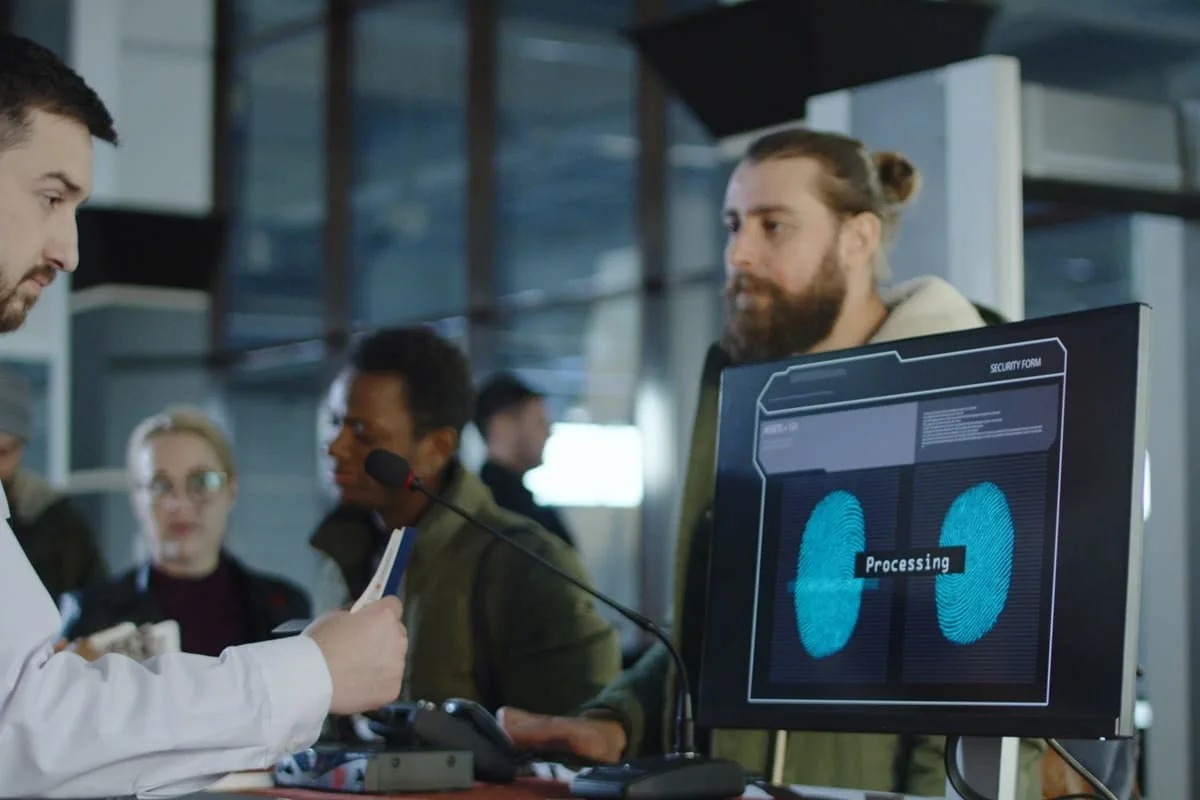Europe is changing how non-EU visitors are recorded at the border, and the ripple effects touch airport arrivals, first port calls, and the rhythm of multi-country sailings. The EU Entry/Exit System (EES) is now live in a phased rollout, replacing passport stamps with a shared digital record, while ETIAS follows in 2026 as a pre-travel authorisation for many visa-exempt nationals. Here is what that means in plain language, with practical steps to keep your cruise days smooth.
Launched on 12 October 2025, the EU Entry/Exit System (EES) digitises arrivals and departures across 29 participating countries and is slated to be fully operational by April 2026. ETIAS is planned for Q4 2026, requiring pre-authorisation for visa-exempt nationals, including Australians. Expect clearer records, updated port and airline processes, and eventually quicker checks once systems settle.
The shift from ink stamps to a shared digital log sounds technical, yet you will notice it on embarkation day, at the first Schengen call, and whenever your itinerary hops out of Schengen and back again. With a little structure, you can turn these touchpoints into routine moments that do not steal time from your holiday.
Under EES, your entries and exits are recorded electronically rather than stamped by hand. That reduces inconsistencies, clarifies how many days you have spent in Schengen, and lowers the risk of a manual oversight on longer trips. For cruise guests, this means fewer surprises when itineraries weave between Schengen and non-Schengen ports.
The scheme spans 29 European countries, including popular cruise gateways and river hubs. It went live in October 2025 and is expected to be fully operational by April 2026. If you are sailing mid-to-late 2026, most airports and many seaports should be running a settled EES process. Early in the transition, allow extra time at the first EU border you hit, typically the airport before embarkation.
Arriving by air into Schengen, you will likely encounter EES at the airport border control. Once cleared, moving between Schengen ports usually requires minimal formalities, with checks returning when you exit or re-enter from a non-Schengen country. Itineraries touching the UK, Türkiye, Morocco, or North Africa may see border queues as processes bed in, so a sensible buffer on those days helps.
ETIAS is separate from EES. Think of it as a short online travel authorisation, required before entering the EU for many visa-exempt nationals. It arrives after EES has settled, which is why late-2026 onward is your planning horizon.

From Q4 2026, visa-exempt citizens from over 60 countries, including Australia, will be asked to secure ETIAS approval before travelling to the EU. You will complete it online as part of pre-trip admin, similar to approvals used in other regions. Families should plan to apply together so details match your flights and your cruise reservation.
EES is the border system that records your entry and exit. ETIAS is the pre-authorisation you bring with you. Together, they aim to make checks more consistent, which should reduce confusion at first ports of call. In practice, this adds one pre-trip step for many travellers, then a shorter verification at the border.
If you are eyeing a European summer in 2026, you may travel as EES reaches full operation and just before ETIAS begins. For late-2026 and throughout 2027, expect ETIAS to be part of your checklist. Lock in your sailing early, use flexible airfare where possible, and keep an eye on pre-departure emails from your line, as airlines and ports refine their processes.
Not every cruise plan flows through Europe. A handful of recent policy updates elsewhere can influence flight paths, side trips, or back-to-backs. Build a simple checklist now, and you will avoid last-minute speed bumps later.
The United States increased the ESTA fee to USD 40 (approx. A$62) from USD 21 (approx. A$33). If your cruise begins, ends, or connects through the US, include this in your budgeting and pre-trip admin. The US has also restored Hungary’s full ESTA privileges, removing 2023 limits on validity and entries, a minor point unless your party includes Hungarian passport holders.
India and Laos now require electronic travel declarations within 72 hours before arrival. South Africa is rolling out an ETA at Johannesburg and Cape Town for several nationalities, with broader expansion planned once stable. Namibia has widened its electronic visa-on-arrival eligibility to cover more countries. If your European cruise is part of a larger trip, these quick online steps are easy wins that keep your day flowing.
South Korea has extended the K-ETA exemption for 67 countries through December 2026. For Asia circuits that include a Korean call, this removes a pre-trip task for many travellers. As always, your shore-time advisories from the line will reflect any port-specific checks.
Border systems evolve, but planning can stay simple. Partner with a cruise adviser who works with these updates daily, and you will reduce admin to a tidy checklist that does not distract from the fun parts of trip planning.

Before final payment, ensure passport validity covers your itinerary and any land add-ons. From Q4 2026, complete ETIAS for each eligible traveller and save confirmations with your e-tickets. For India, Laos, and South Africa, set calendar reminders to submit electronic forms or ETAs within the specified windows. Your adviser can align names across air, cruise, and hotel bookings to prevent check-in mismatches.
Select staterooms that match how you move through a day. Midship on a lower deck softens motion and keeps lifts close when you are darting between breakfast and the gangway. If sunrises are your ritual, a balcony earns its keep every morning. Travelling with friends, consider adjacent suites to keep social time easy and privacy intact.
For itineraries that hop out of Schengen and back again, plan one highlight ashore and give yourself slack around it. If a call includes a non-Schengen stop before you re-enter the EU, a ship-run tour can protect timing. Your adviser will read the port sequence closely and suggest where a private guide or a simple DIY day makes the most sense.
The joy of a well-planned cruise is unchanged, waking to new views, wandering markets, and being back on deck for sunset. The new systems simply ask you to add a couple of pre-trip steps at the right time. Choose dates and routes that fit your pace, then align the paperwork so the border moments become routine.
If you are weighing a late-summer Mediterranean loop against a spring river voyage, or deciding whether to pair a repositioning with coastal city breaks, a clear view of schedules helps decisions fall into place. Comparing port orders is especially useful when itineraries weave between Schengen and non-Schengen calls.
To scan dates and put options side by side, browse current departures by month, region, and length using our Cruise Finder. It is the quickest way to match school terms, annual leave, and your preferred pace with European sailings that will work for you.
Our Cruise Finder lets you filter by embarkation port, duration, and ship style, then save favourites to compare shortlists at a glance. It is particularly handy when you are considering back-to-backs or adding a land segment, because you can see gaps between sailings and decide where a city night or a countryside stay fits best. Start shortlisting now.
Plan Your Europe Cruise With Confidence
Border systems are changing, yet the outcome should be smoother travel once EES has settled and ETIAS is in place. If you would like tailored help comparing lines, mapping ports to interests, and selecting cabins that suit your travel style, chat to our cruise specialist today.




Comments